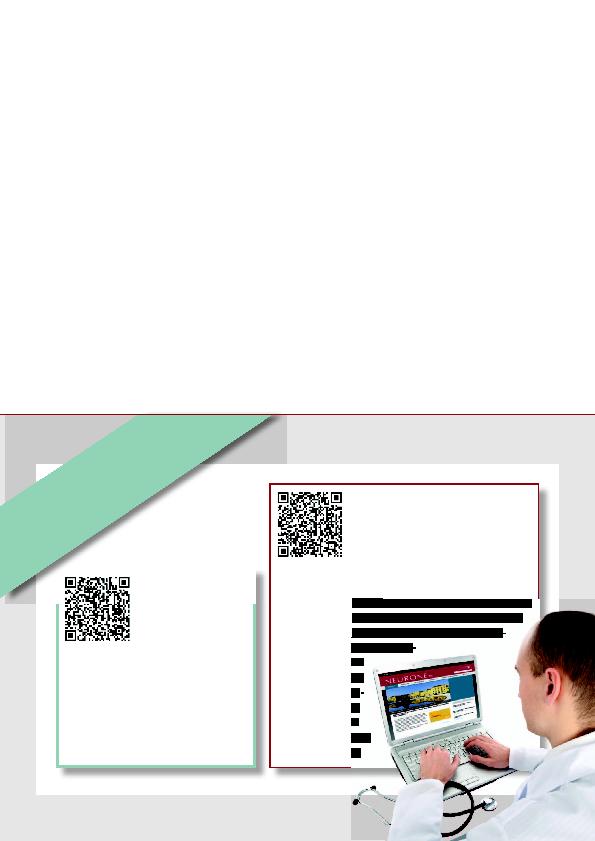
qu'une efférence des NSC. Du fait de la
présence de récepteurs melatoniner-
giques dans les SCN, la MLT exogène a
des propriétés chronobiotiques. Les ago-
nistes et antagonistes spécifiques aux di-
vers récepteurs de la MLT sont donc des
outils pharmacologiques utiles aux inno-
vations thérapeutiques dans ce domaine
particulier.
1.
nophotic stimuli to synchronize the mammalian
circadian clock. Frontiers in Bioscience 2003;8:246-57.
of food anticipation. Europ. J. Neurosc 2009;30:1676-
87.
circadian clock? Med Sci (Paris) 2005;21:66-72.
oscillators in mammals: time and food. J Biol Rhythms
2003;18:250-60.
cerebellum harbors a circadian oscillator involved in
food anticipation J. Neuroscience 2010;30:1894-1904.
and internal time-giver in the circadian clocks network.
J Physiol Paris 2011 (in press).
real-time reporting of circadian dynamics reveals
persistent circadian oscillations in mouse peripheral
tissues. Proc Natl Acad Sci USA 2004;101:5339-46.
calorie restriction to control daily timing in mammals. J
Comp Physiol B 2010;180:631-44.
mammalian circadian timing system. J Biol Rhythms
2009;24:3-15.
coupling signal from the transplanted suprachiasmatic
nucleus controlling circadian locomotor rhythms.
Nature 1996;382:810-13.
transmits the behavioural circadian rhythm of the
suprachiasmatic nucleus. Nature 2002;417:405-10.
central and peripheral clocks. Nat Rev Neurosci
2001;7:521-6.
circadian rhythms: the efferent projections of the
suprachiasmatic nucleus. Prog Brain Res 1996;111:229-
40.
mammalian suprachiasmatic nucleus: coding circadian
time by transmitter selection and specific targeting. Cell
Tissue Res 2002;309:109-18.
the hypothalamic balance of life. J Biol Rhythms
2006;21:458-69.
output mechanisms. Essays Biochem 2011;49:137-51.
Endocrinol 2009;200:3-22.
environment induced inhibition of corticosterone
secretion: physiological evidence for a suprachiasmatic
nucleus mediated neuronal hypothalamo-adrenal cortex
pathway. Brain Res 1997;758:229-36.
driving influence of the suprachiasmatic nucleus on
adrenal sensitivity to AC TH. Am J Physiol Endocrinol
Metab 2002;282:E458-465.
tryptophan hydroxylase-2-mRNA: within raphe neurons
is induced by corticoid daily surge and modulated by
enhanced
mediated nycthemeral and photoperiodic regulation of
tph2 expression. Europ J Neurosc 2011;33:1308-17.
prospects. J Biol Rhythms 2005;20:291-303.
Anatomical demonstration of the suprachiasmatic nucleus-
pineal pathway. J Comp Neurol 1999;406:171-82.
Suprachiasmatic control of melatonin synthesis in rats:
inhibitory and stimulatory mechanisms. Eur J Neurosci
2003;17:221-8.
evidence for a controlled offset of melatonin synthesis at
dawn by the suprachiasmatic nucleus in the rat.
Neuroscience 2005;130:797-803.
Neuroendocrinol 2003;15:1-5.
attempt to correlate brain areas containing melatonin
binding sites with rhythmic functions: A study in five
hibernator species. Cell Tiss Res 1994;278:97-106.
Neurosciences 2002;4:57-72.
specific abolition of Per1 expression in the pars tuberalis
by pinealectomy in the Syrian hamster. Neuroreport
2001;12:579-82.
induces Cry1 expression in the pars tuberalis of the rat.
Mol Brain Res 2003;114:91-182.
circadian clock entrained by melatonin is ticking in the
rat fetal adrenal. Endocrinology 2011;152:1891-900.
Med Rev 2005;9:25-39.
effect of melatonin. Cell Tiss Res 2002;309:183-191.
circadian rhythms during daily infusion of melatonin or
S20098, a melatonin agonist. Am J Physiol
1999;277:R8126-R828.
dose 0.5-mg melatonin on the free-running circadian
rhythms of blind subjects. J Biol Rhythms 2003;18:420-9.
confirmatory result using a simplified protocol. Biol
Psychiatry 1992;32:705-6.
elderly. Exp Gerontol 2000;35:1229-37.
relevance. Exp Gerontol 2001;36:1083-100.
sclérose tubéreuse
de Bourneville
mise à jour des connais-
gine génétique et d'expression surtout neuro-
logique et psychiatrique. Des avancées géné-
tiques et biochimiques permettent d'envisa-
ger des progrès manifestes dans la prise en
charge. Il est donc important d'éviter le
«sous-diagnostic» et le diagnostic tardif.
pour les médecins?
de la «clause de non-concurrence». En vertu
peut exercer aucune activité similaire. Autrement dit, ce collabo-
rateur ne peut ni lancer lui-même une société, ni exercer dans
une entreprise concurrente de son ex-employeur une fonction
risquant de porter préjudice à ce dernier. L'ex-collabora-
teur en question pourrait notam-
ment utiliser à des fins
personnelles ou à
l'avantage d'une en-
treprise concurrente
les connaissances
acquises dans la société
de son ex-employeur.